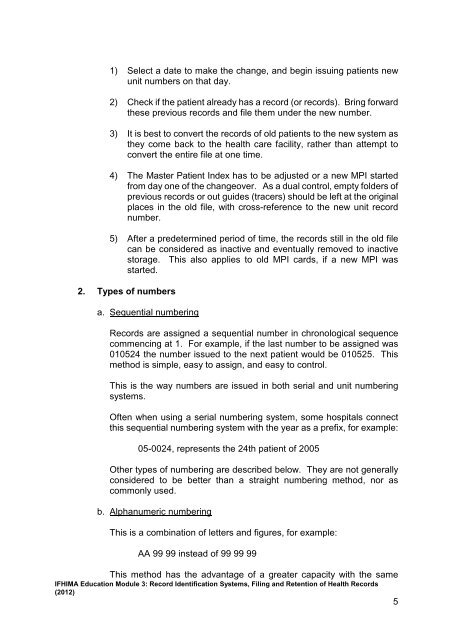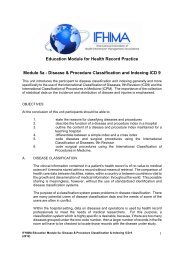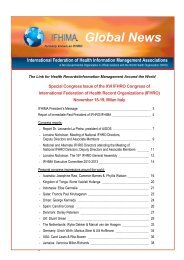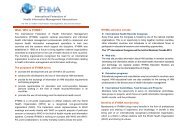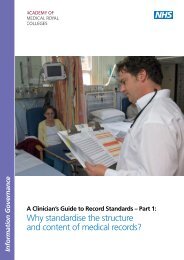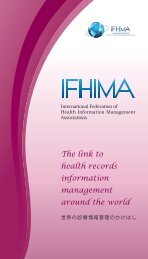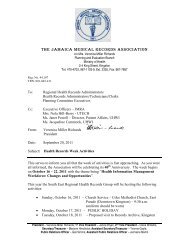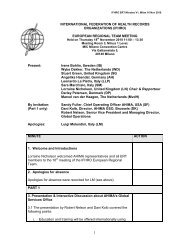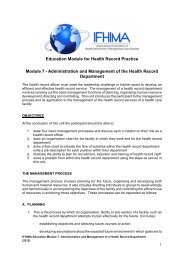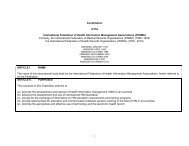Learning Packages for Medical Record Practice - ifhima
Learning Packages for Medical Record Practice - ifhima
Learning Packages for Medical Record Practice - ifhima
Create successful ePaper yourself
Turn your PDF publications into a flip-book with our unique Google optimized e-Paper software.
1) Select a date to make the change, and begin issuing patients new<br />
unit numbers on that day.<br />
2) Check if the patient already has a record (or records). Bring <strong>for</strong>ward<br />
these previous records and file them under the new number.<br />
3) It is best to convert the records of old patients to the new system as<br />
they come back to the health care facility, rather than attempt to<br />
convert the entire file at one time.<br />
4) The Master Patient Index has to be adjusted or a new MPI started<br />
from day one of the changeover. As a dual control, empty folders of<br />
previous records or out guides (tracers) should be left at the original<br />
places in the old file, with cross-reference to the new unit record<br />
number.<br />
5) After a predetermined period of time, the records still in the old file<br />
can be considered as inactive and eventually removed to inactive<br />
storage. This also applies to old MPI cards, if a new MPI was<br />
started.<br />
2. Types of numbers<br />
a.<br />
b.<br />
Sequential numbering<br />
<strong>Record</strong>s are assigned a sequential number in chronological sequence<br />
commencing at 1. For example, if the last number to be assigned was<br />
010524 the number issued to the next patient would be 010525. This<br />
method is simple, easy to assign, and easy to control.<br />
This is the way numbers are issued in both serial and unit numbering<br />
systems.<br />
Often when using a serial numbering system, some hospitals connect<br />
this sequential numbering system with the year as a prefix, <strong>for</strong> example:<br />
05-0024, represents the 24th patient of 2005<br />
Other types of numbering are described below. They are not generally<br />
considered to be better than a straight numbering method, nor as<br />
commonly used.<br />
Alphanumeric numbering<br />
This is a combination of letters and figures, <strong>for</strong> example:<br />
AA 99 99 instead of 99 99 99<br />
This method has the advantage of a greater capacity with the same<br />
IFHIMA Education Module 3: <strong>Record</strong> Identification Systems, Filing and Retention of Health <strong>Record</strong>s<br />
(2012)<br />
5


